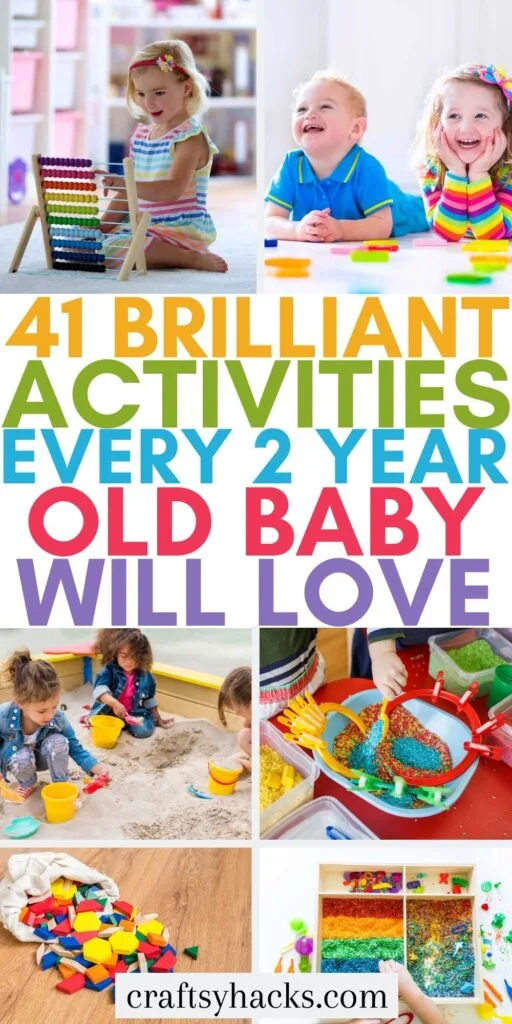Looking for ways to get your toddlers more active? These fun 2-year-old baby activities are creative and will keep your toddlers engaged.
Two-year-old tots are full of rambunctious fun. They have a ton of energy that needs to be worked–played–out of their system.
But at that age, everything they do is an opportunity to learn, to teach them something new, and to provide them with fun activities that also help them with their development. So, with that in mind, check out these 41 fun activities for your two-year-olds to indulge in.

1. Side Walk Chalk

Kids love playing with chalk, don’t they? As long as they’re not eating them, I think that there’s a ton of potential when it comes to chalk.
How about you rope your kid into some fun playtime outside? You can take them down your front drive and draw on the sidewalk with chalk. It’s super fun and colorful to decorate the sidewalks, but also, since it’s completely washable, it’s also easy to clean up.
2. Color Wheel to learn Colors
While rainbows are usually a popular choice for parents teaching their kids about primary colors, there are other options out there for you to explore. Take, for example, a color wheel to help your two-year-old learn colors.
It does involve a little more prep work than painting a rainbow, but it’s something that you can carry forward and use again when needed.
3. Finger Painting
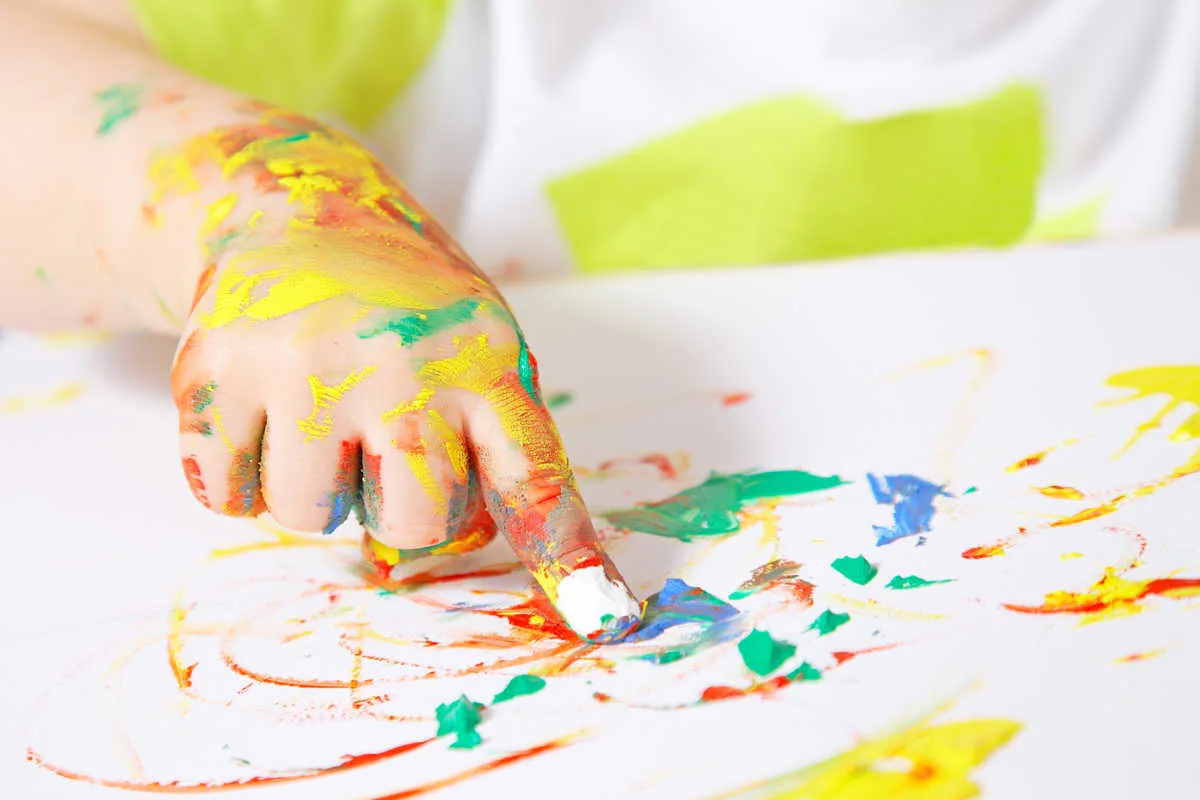
Let’s get those chubby little fingers messy; it’s time for some finger painting! You won’t believe how fun an hour or two of letting loose and embracing the mess that comes with finger painting can be.
Grab a few paper plates, your medium of choice–cardstock, watercolor paper, chart paper–paints, and a couple of sponges. You should also have plenty of paper towels at the ready to sop up any spills and splatters.
This is also a great activity for 1-year-olds.
4. Face Painting
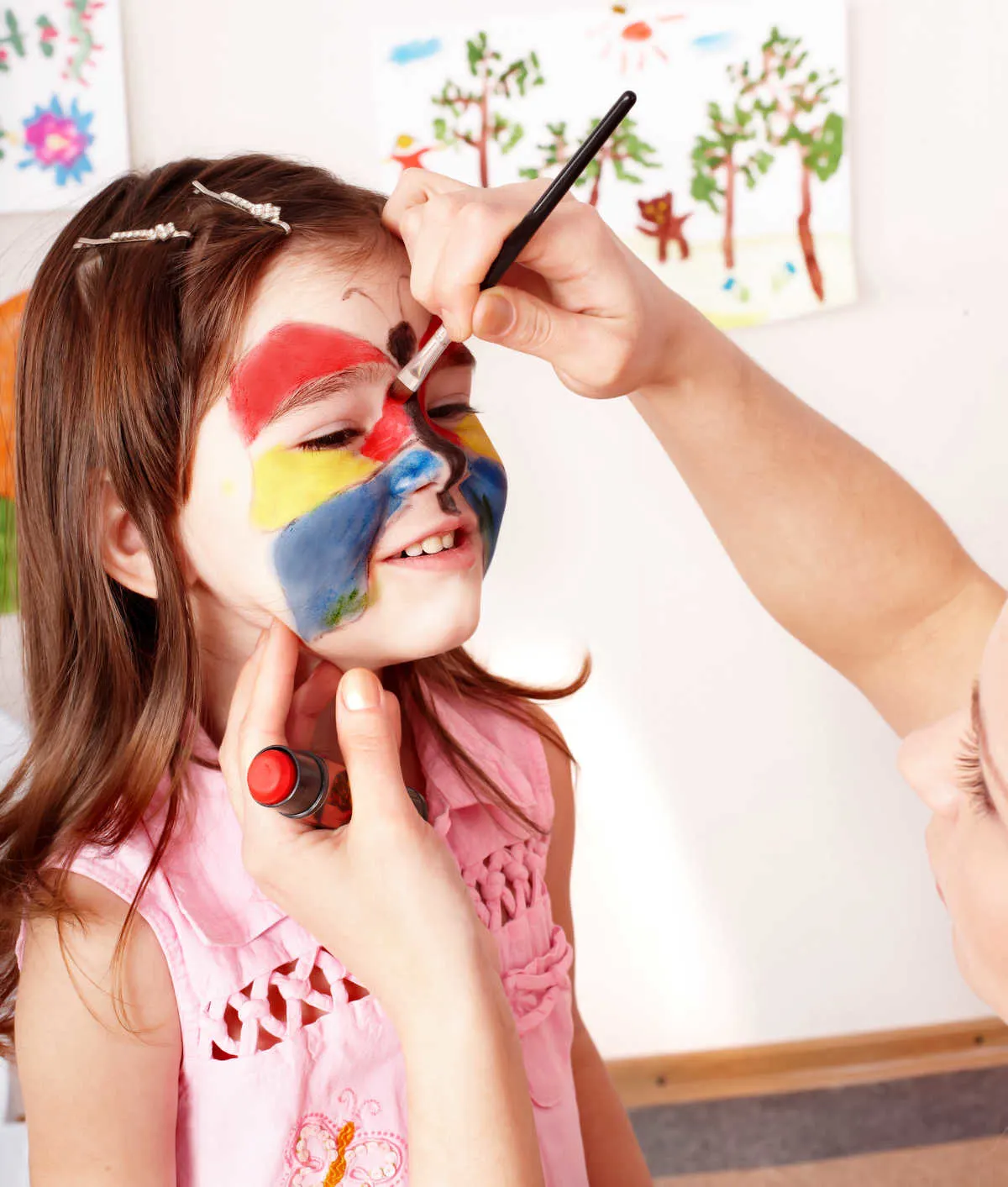
The next best thing to finger painting, you ask? Why, it’s face painting, of course! Kids of all ages, and plenty of adults, too, simply love having their faces painted.
It can be messy and sweet, and for your two-year-olds, it can be sheer bliss. You can grab a couple of brushes and acrylic paints to paint your kids’ face yourself.
Just remember to make sure your child doesn’t have any allergies to the paint you’re using. Test the product on a small portion of skin–like their hands–and then give it a go.
5. Bathtub Paint
This DIY bathtub painting activity for toddlers is once again messy and fun. But the best part about this is that it is completely washable. That means that you can easily remove the paint and it won’t stain your surfaces.
Before you go ahead and paint the entire tub, though, test it first on a small part–just in case.
Here’s a list of things you will need to assemble:
- 1 cup of dish detergent or liquid soap*
- 1/2 cup of cornstarch
- 1/2 cup of boiling water
- Food coloring
6. Rainbow Pasta Sensory Activity
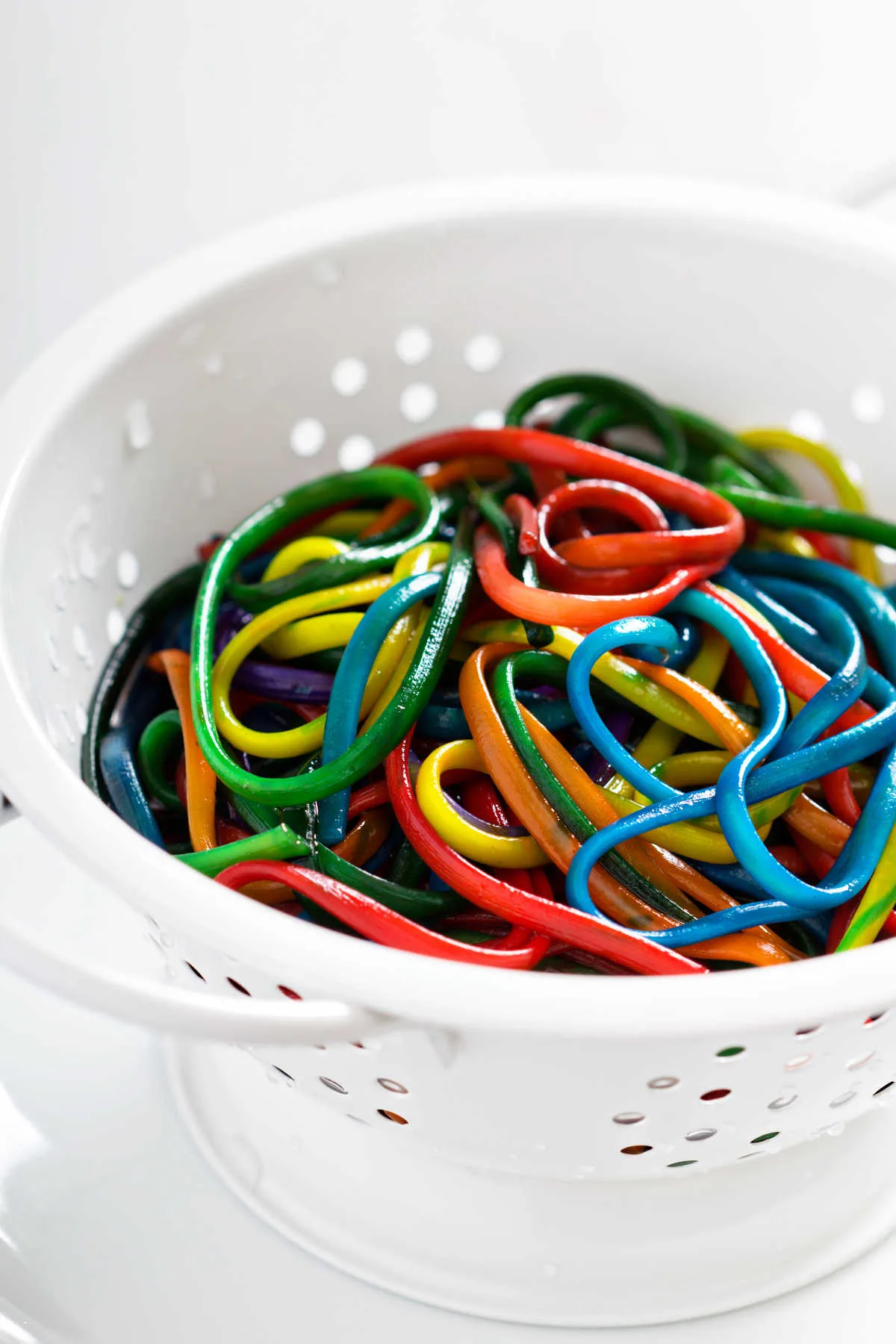
Cooked pasta gone cold doesn’t really taste great. But you know what you can do with it? You can use it as a part of a fun, messy, and squishy sensory activity for your two-year-olds to indulge in.
Want to take it up a notch? Then grab a few bottles of food dye and add a few drops to the pot when you’re boiling the pasta. Go crazy and all-out with the colors, so your toddler has a whole rainbow of colored pasta to play with!
7. Playdough
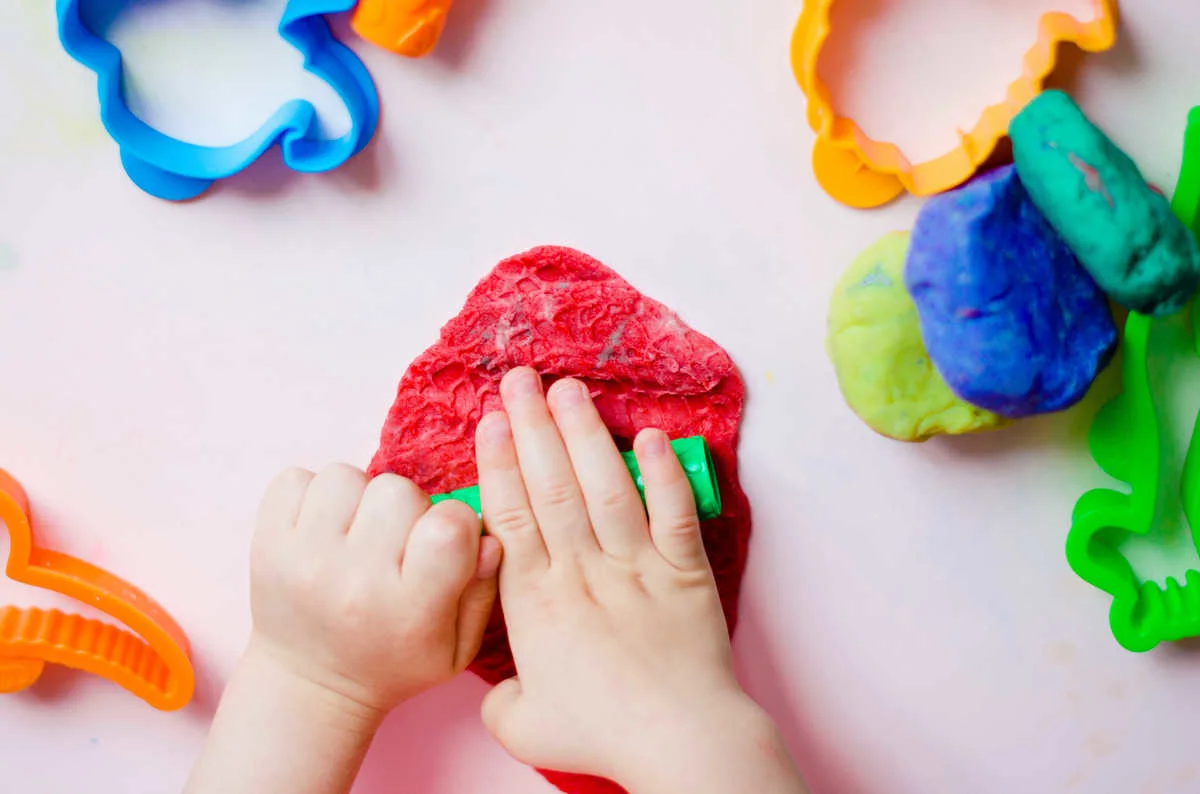
Speaking of squishy and messy sensory activities, let’s go back to the basics: playdough. Growing up, we’ve all had our fun with playdough, haven’t we?
Heck, I’m all grown up, and I still love playdough–it’s a rite of passage. So on your next trip to the store, grab a few boxes of playdough for your toddler to enjoy.
Alternatively, you can even make your own dough out of flour, cornstarch, or salt, if you want the salt dough.
8. Stacking Cups

Stacking cups–stacking anything stackable for that matter like blocks, toys, books–can be fun and a way to help your toddler hone his motor skills. When your toddler is stacking his cups, there’s a ton of hand coordination and core-balancing that takes place.
This makes for a rather wonderful developmental activity for you and your kid to work on. You really don’t need a whole lot of materials or fancy toys, either. Just anything stackable should do.
Paper cups, which you probably already have in your pantry, should be ideal.
9. Story Stones
Story stones are essentially pebbles with pictures and paintings on them. You can use them as prompts to build a story narrative for your toddler. In fact, your toddler can build the story himself, too.
It’s a fabulous tool to help develop communication and interpretation skills. It’s also something that can encourage and nurture your child’s creativity and imagination. So grab a few flat pebbles and paint these story stones by hand, or just pick up a set online.
10. Frozen Water Beads

What do you get when you freeze water beads? Well, apart from the ice beads themselves, you also get a cool–pun intended–a sensory activity for your toddler to enjoy.
If you’re wondering what water beads are, you’ve probably seen florists use them in floral arrangements. They’re jelly-like beads that, when frozen, turn quite hard and also crystalize some.
Just remember to keep an eye on your toddler, so he doesn’t accidentally swallow these beads.
11. Musical Wall
What, you might be wondering, is a musical wall? If you’ve got some fencing in your backyard or a large wooden board, then you’re nearly there.
All you have to do is pick out a variety of objects that will make different sounds–music–for your toddlers to explore. Is it hard to recreate? No.
You can pick any household items you have at hand: pots, pans, buckets, cans, and more. Just tag them up on the wall, and then give your toddler a wooden spoon and time to explore and create music.
12. Egg Carton Color Sorting
I love it when we get to turn items and objects around the home into something unique and creative or use them during playtime for kids. For this particular activity, you’ll need to retrieve an egg carton or two.
It’s a simple fine motor activity that can help your kids develop sorting skills based on color. Grab a few bottles of paint and color the insides of the carton in a rainbow of different colors. You can then sort little colored objects–colored cotton balls, beads, and more–into their respective color slots.
13. Flower Sensory Bin

If you’ve ever come across sensory bins, then you’ll know how much fun they can be for toddlers to play with and explore. This flower sensory bin is one of those lazy summer afternoon activities for your toddler to indulge in.
You can put anything floral in there: petals, stems, buds, seeds, and more. You can even include full blossoms. Just make sure you dethorn everything first before it goes into the bin.
14. Indoor Fort
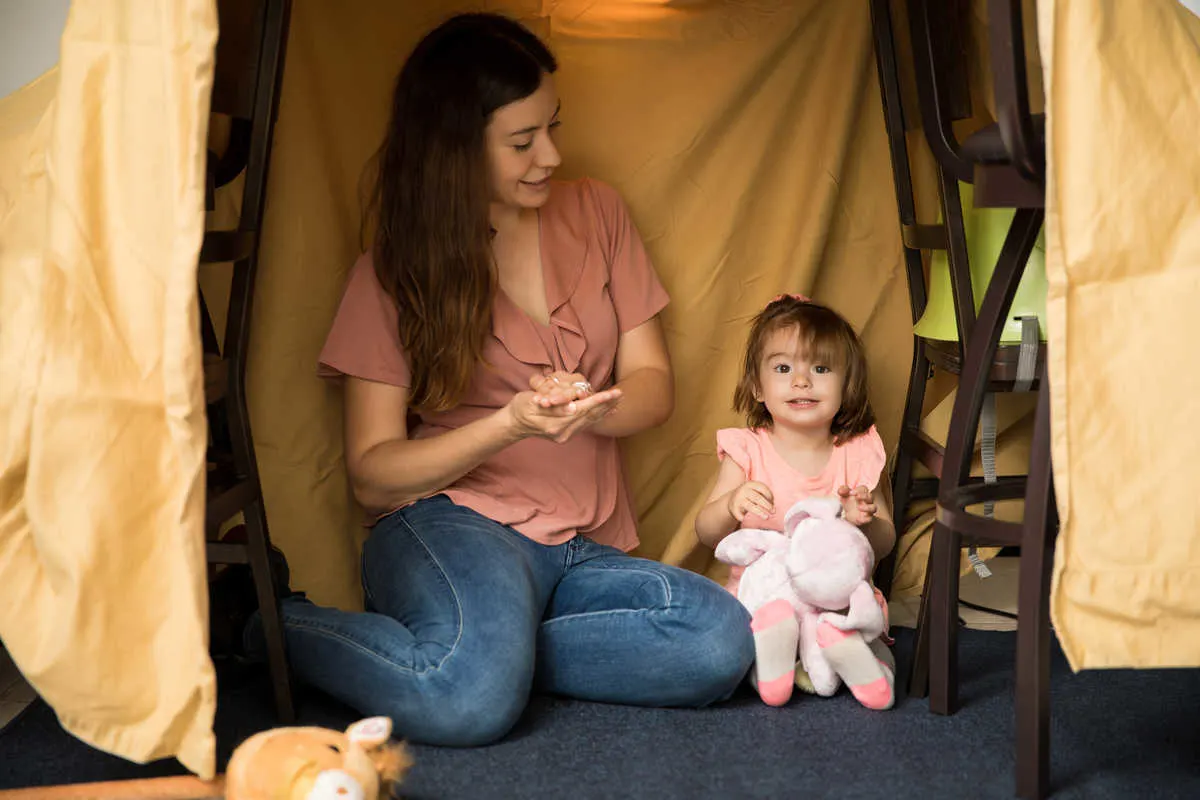
Have you ever built an indoor fort? It’s one of those rites of passage when you’re growing up, that, I’ll admit, I still enjoy. There’s something cozy and sweet about building forts and snuggling up inside for a sleepover, to watch a movie, or just read a book.
This is something that you and your toddler can do, as well. Build a cozy little indoor fort, snuggle up together, and have a fun bedtime story session.
15. Pretend Play
Pretend play encourages little children to expand their minds and let their creativity and imagination flow. It’s a kind of safe space for them to grow, learn, create, and have fun doing all that.
Pretend play can involve interactive storytime that also includes props to make things more interesting. If you do a little research, you can have a guided pretend play session with your kids and their friends, too.
16. Easy Ring Toss

Do I even need to explain how fun ring toss games can be? I remember spending a ton of time perfecting the hand-eye coordination required to toss the ring around the object.
Then, when the annual fair came around, I’d have a ball! Your toddler too, can benefit from ring tossing. It will help them hone their hand-eye coordination and also keep them occupied for a good long while.
17. Sandbox
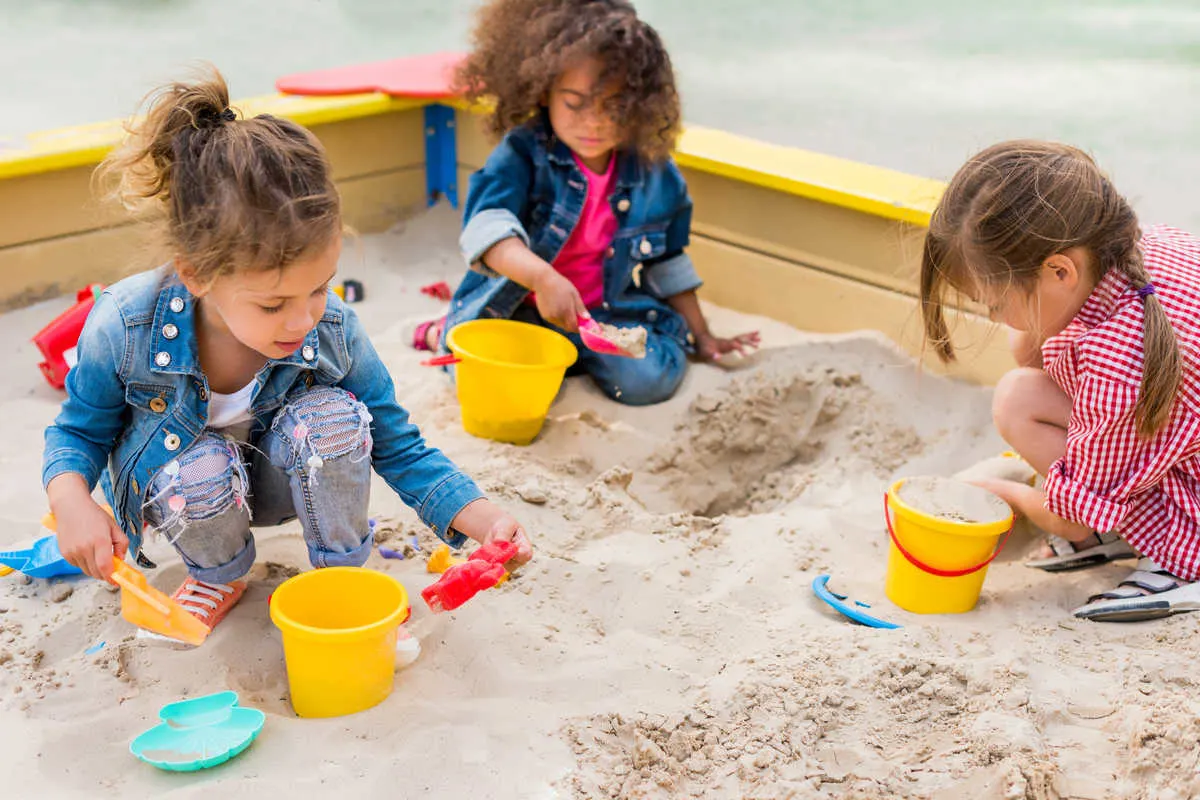
Every kid out there has at least a memory or two of playing in the sandbox. It’s something we all loved to do, and will probably continue to love forever.
Allowing your toddler to play in the sand can be a wonderful way to keep them occupied. There are a ton of sub-activities, too, that you can have them work on once they’re inside the sandbox.
For example, you can toss in a few toys, sensory objects, and other tools to help the build a little sandcastle, too.
18. Building Towers
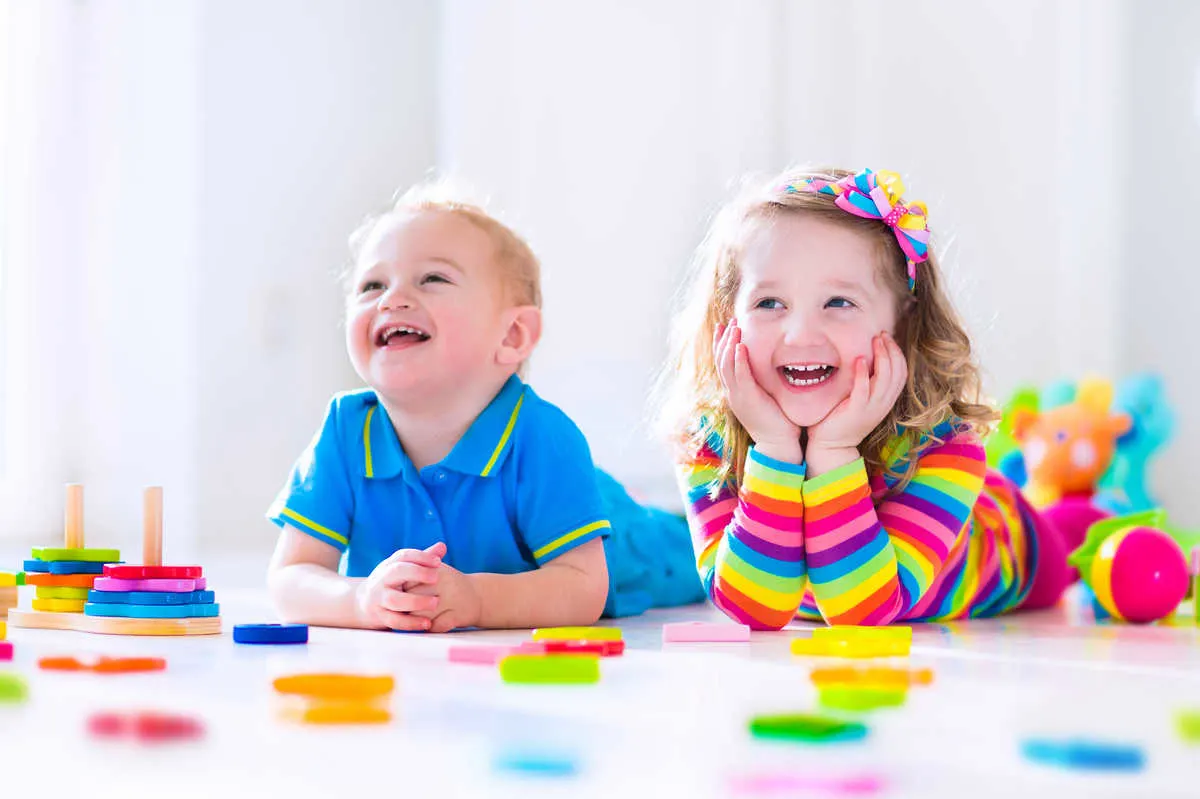
Seeing the sandcastles your child built, you’ve probably pegged him as a budding architect in the making. Well, here’s another building activity that might just help him on his way and cultivate an interest that might grow into a whole career.
Building towers is fun and at the 24-month mark, your toddler can typically pull off building a seven-stack tower. You can use building blocks, little wooden blocks, cups, ad just about anything stackable, as well.
19. Simon Says
Simon Says will allow your toddler to receive information and commands, interpret them, mimic them or execute them, and finally it allows them to learn how to follow instructions. That there is an all-rounded activity that your child will learn from and enjoy.
The best part is that it doesn’t require any planning or any elaborate tools or props. You can do a little research to find out the best SImo Says prompts for your two year old to execute, and that’s about it.
20. Object Tracing

Does your toddler love to draw? Is he displaying signs that he might be a budding artist in the making? Well, all artists have to start somewhere, right?
So let’s start your two-year-old Picasso off with a simple yet effective activity: tracing objects. Tracing objects can help your child understand the nuances of the shape–every edge, curve, line, and groove.
This will also help them study and subsequently understand the dimensions, size, and other facets of the object in question–all vital for every budding artist.
21. Obstacle Course

An obstacle course can never go out of style. Whether it’s at an Olympic level tournament, or a mini obstacle course for your toddler to overcome, there is much to learn out of them.
For a two-year-old, when presented with an obstacle, he will learn how to tackle said obstacle and push himself to overcome it. It can help build logic and technical thinking, as well as help him learn how to think out of the box.
You can look up different obstacle course props and maps and pick one that is best suited to your toddler’s specifications.
22. Count Everything
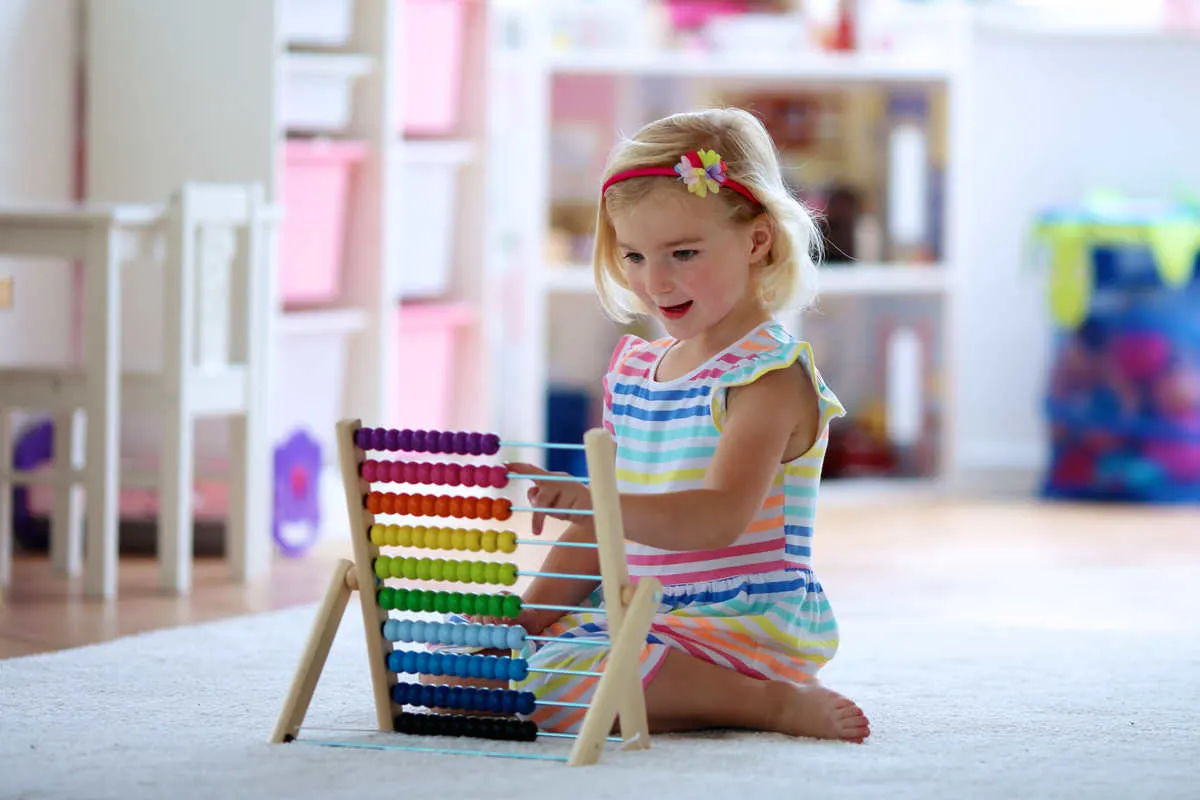
How does that old nursery rhyme go: A-B-C, It’s easy as 1-2-3…? Well, alphabets and numbers are going to play a tremendous part in every person’s life and the best time to learn them is when your child is around 2 to 3 years of age.
You can make counting exercises fun and refreshing by encouraging your child to count…everything. For example, if you’re walking down the street, he can count the number of buildings you pass or the benches that are there on the sidewalk.
23. Color Sorting
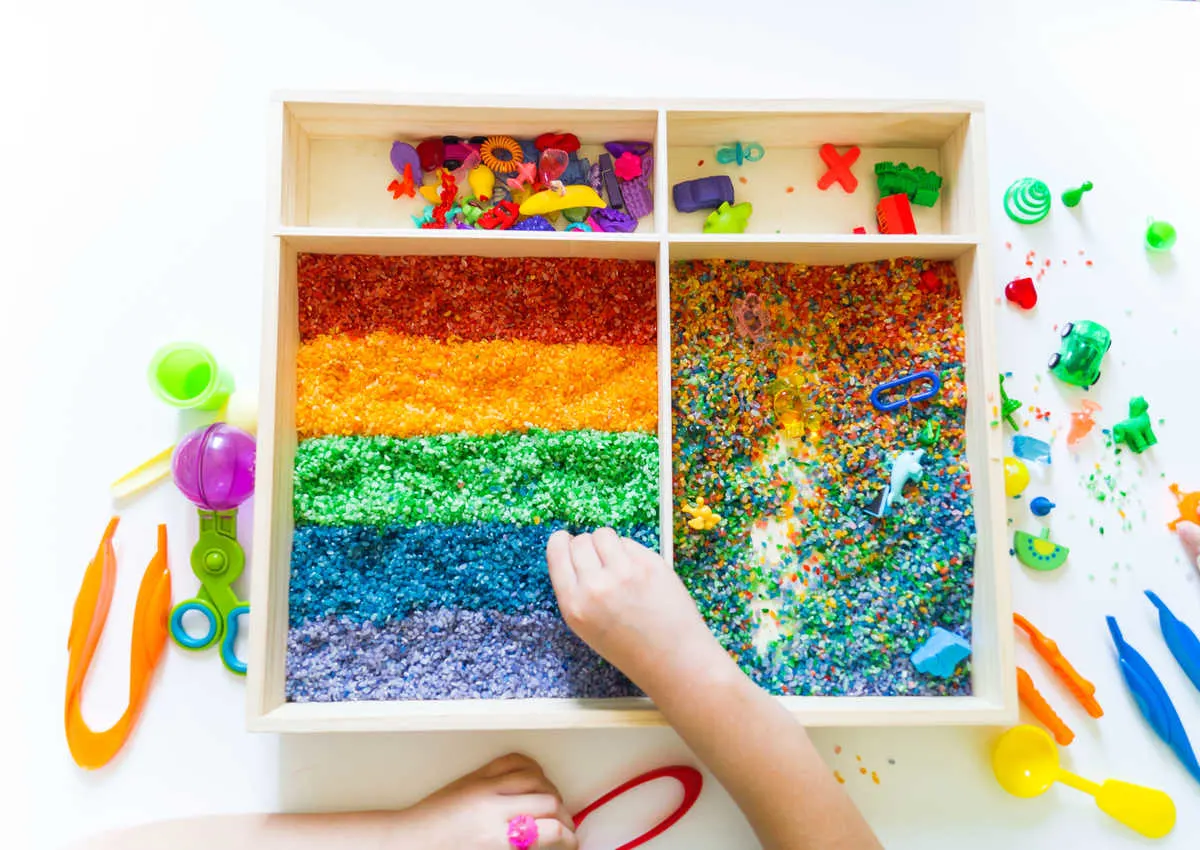
Right after the alphabets and numbers, your child should also be learning his shapes and colors. It’s famously known that a person can never explain or teach colors to another being. So how do you teach your kids their primary colors?
Well, you correlate objects with colors, and sort them into their respective color slots. It’s easier than you’d expect. You can paint an empty egg carton in different colors and find colorful beads, colored cotton balls, and other objects to sort into their respective color slots.
24. Watering the Plant
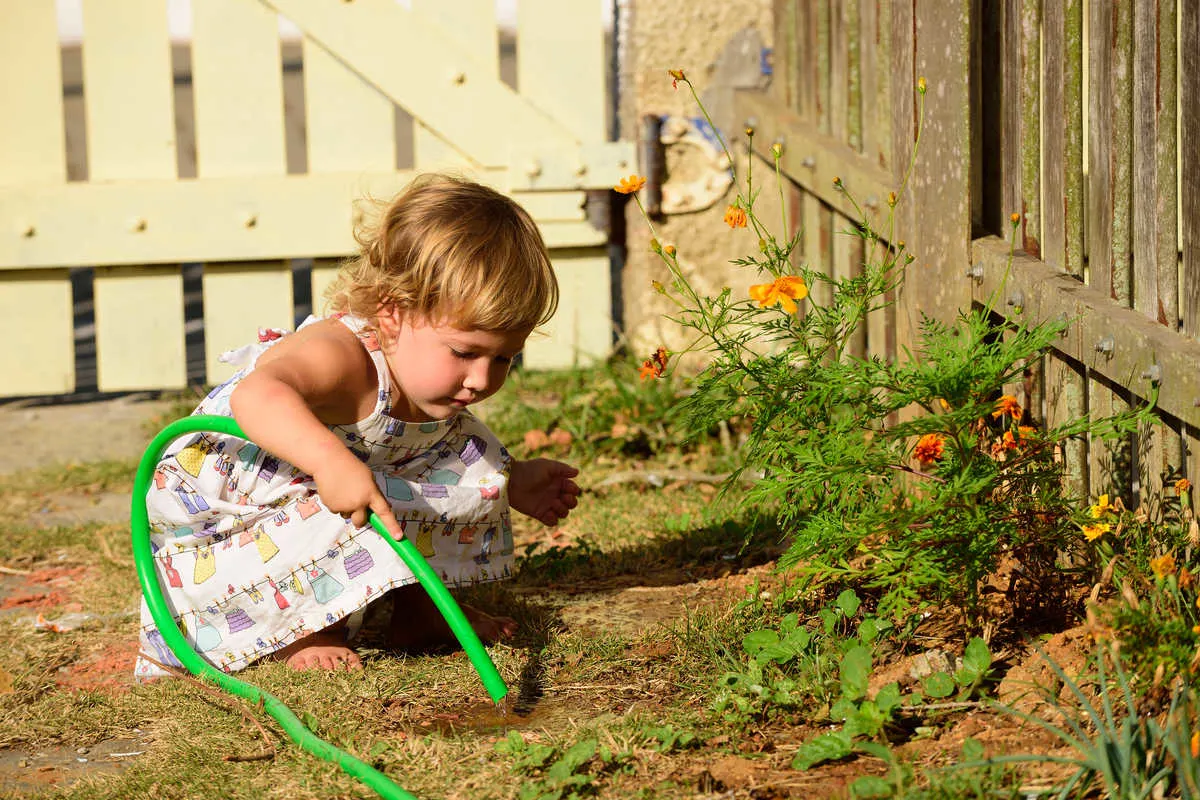
What does watering the plants do for a rambunctious child who’s full of energy? Well for starters, nurturing, tending, and caring for plants can teach your kids the art of patience.
There’s something magical about watching plants grow and flowers bloom, and knowing that you had something to do with it blossoming. It is also an opportunity to get your kids interested in gardening and allow them to be around nature and plants, too.
25. Plant a Seed

If your child really enjoyed watering plants, then perhaps it’s time to expose him to other avenues of gardening, like planting a seed. This, too, is an opportunity to teach him how to be patient.
There’s nothing like planting a seed, caring and tending it, and finally watching it grow–slowly, but steadfast–into a plant. It can really help your child understand the natural order of life and nature, too.
26. Edible Sand
When you plop your toddler down into a sandbox, the odds are that at least a handful of sand is going to find its way into his mouth. It’s pretty inevitable and even when you keep an aye on him 24/7 he’s going to eat sand.
So what’s the solution? Well, you make edible sand, of course. There are plenty of ‘recipes’ out there for you to choose from. You can even add food dye to make colored edible sand—how does that sound?
27. Plank Walk Balancing Game
We’ve already read about how important it is for kids to learn how to balance their bodies. They need to build their muscles, work on their core, and even find balance in their limbs.
How do you get your toddler to do that? Well, you make them walk the plank. It’s not as drastic as it sounds. All you need to do is have your toddler balance himself as he walks along a narrow strip–a plank, so to speak.
28. Craft Slime
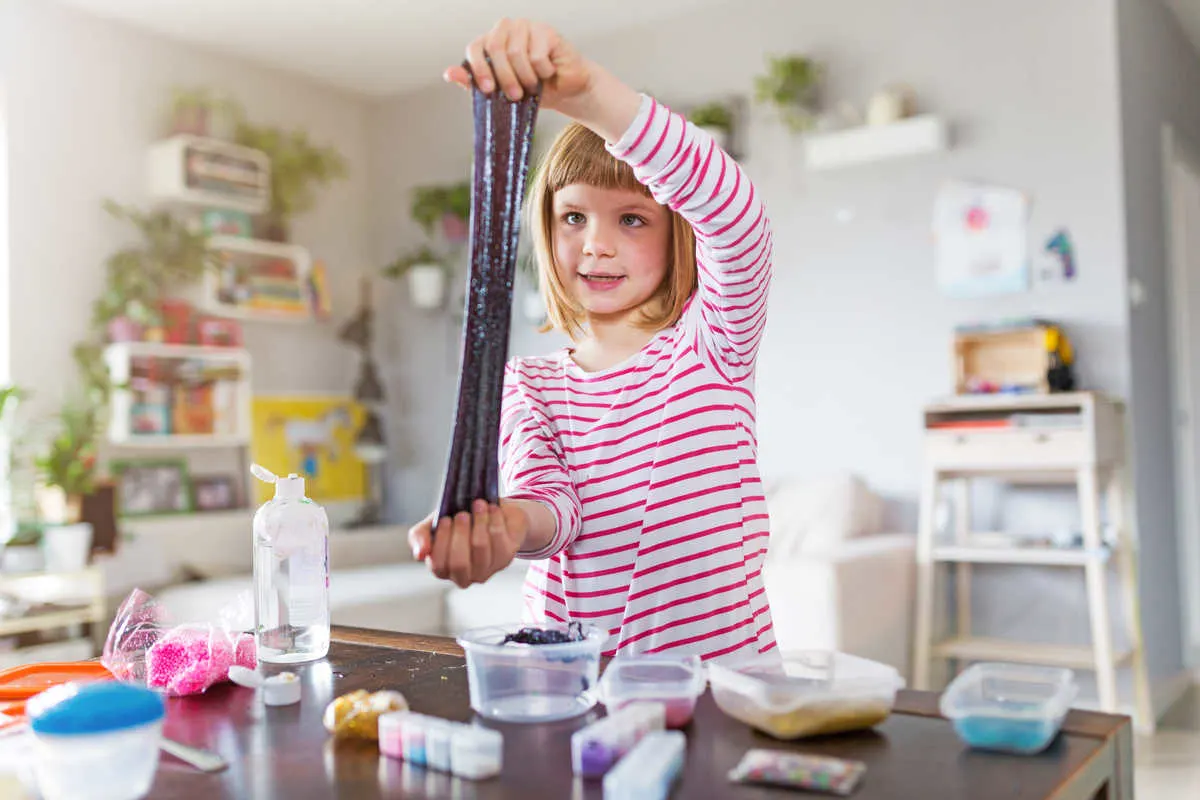
Slime is perhaps the biggest crowd-pleaser when it comes to sensory activities. There’s just something about slime that truly delights kids–and truly disgusts the parent in question.
Craft slime can be bought just about anywhere at craft stores. Alternatively, you can make them right at home, as well, if you follow a particular recipe.
29. Colorful Sensory Bag Play
A sensory bag is not too different from a sensory bin. Only, this one isn’t just a treat for the hands, it’s also a treat for the eyes seeing as how you can go all out with colors and textures.
If you do a little research about what should go into the bag, then you’ll also be able to add some auditory treats, as well. So that sight, sound, and touch, which is a lovely activity in the making.
30. Stop and Go games
Learning to respond to commands is vital for all kids, especially at this particular age. So how do you get them to respond to basic commands like stop and go?
You turn it into a fun game, of course. Stop and go games can include just about anything from little races to activities like musical chairs where you start and then stop after a particular time.
31. Paper Crafts
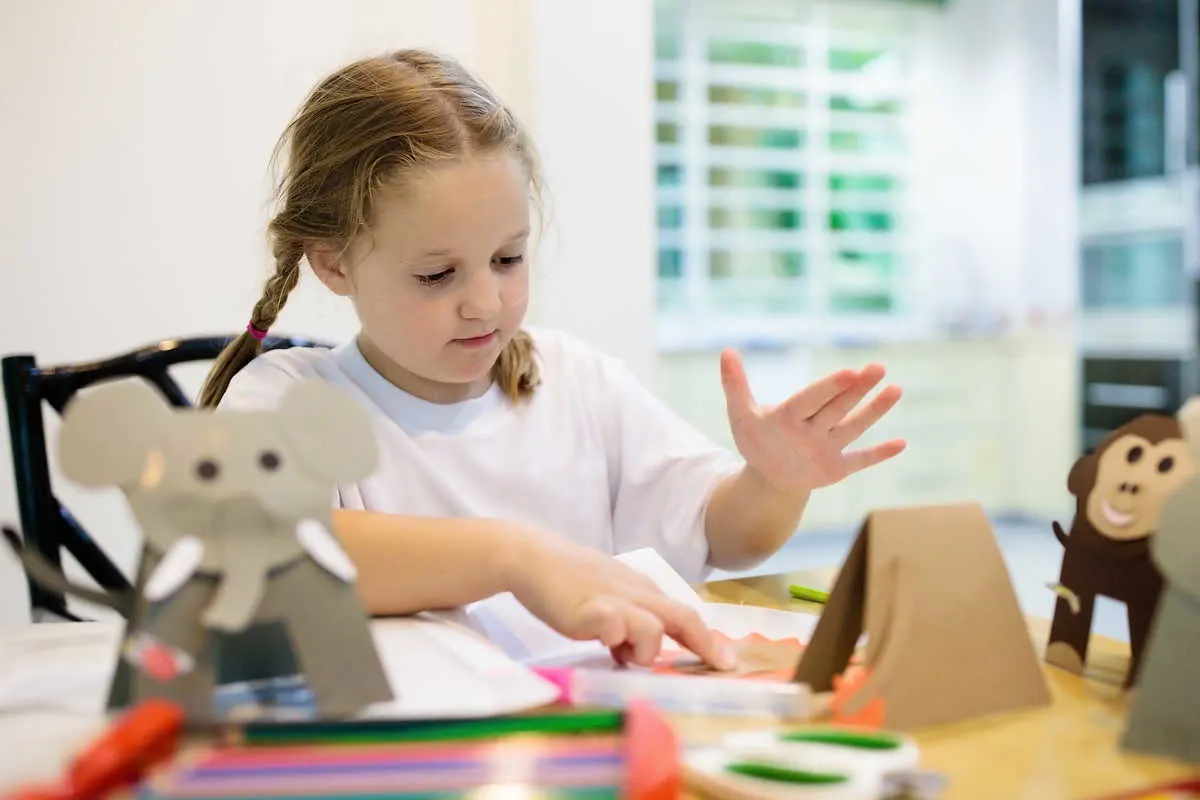
Playing with paper can be a great way to learn a whole variety of new tasks. It can include cutting, tearing, gluing, folding, and drawing on paper.
It’s super versatile, inexpensive and easy to plan–all perfect ingredients to the perfect recipe of developmental activities. You can also sit your toddler down and just have them paint, draw, and doodle on paper, as well–it doesn’t even have to be an elaborate activity.
32. Pass a Ball

I bet you have played many rounds of passing the present at birthdays and parties. I also bet you’ve played several versions of that game, like passing the ball.
This game is a great way to bond with your kid and also to help build some elementary motor skills. If you’re wondering how that works, then it’s pretty simple. Any movement that your kid makes will be a test in balance and coordination!
33. Play Dress Up
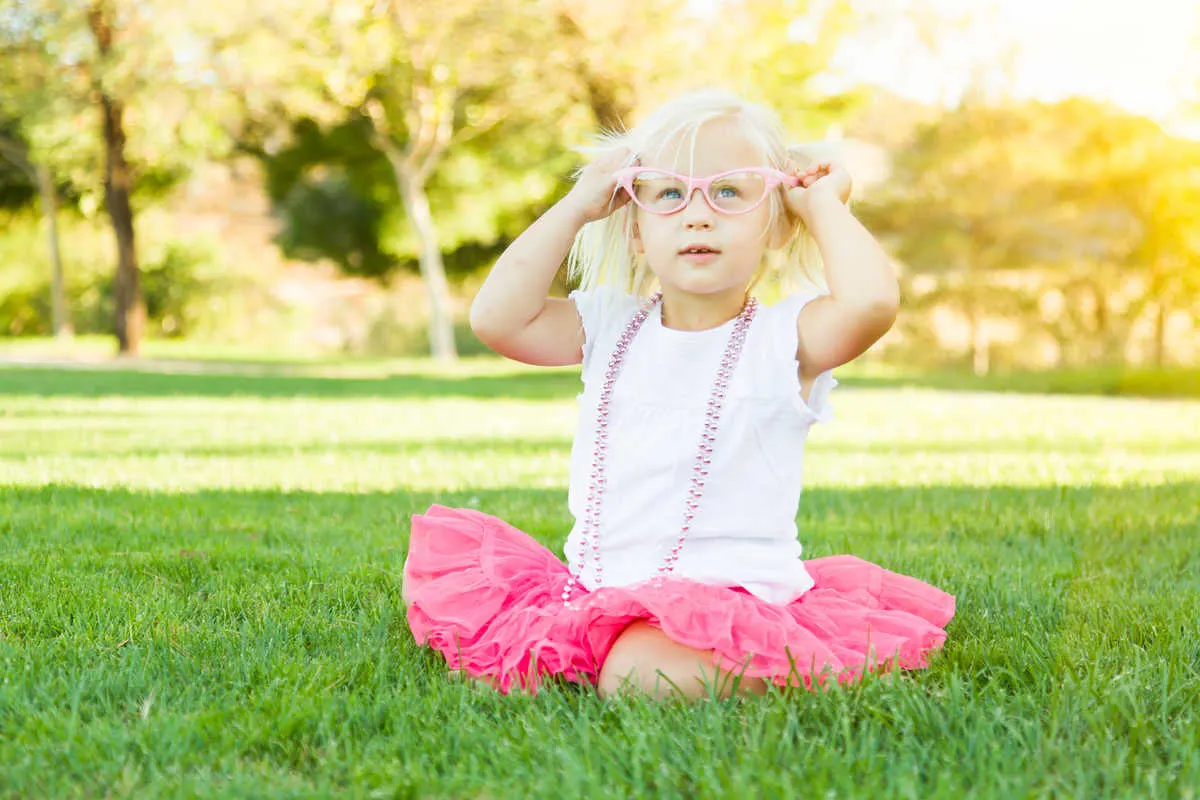
Playing dress up isn’t just for girls, you know. Boys can love to play dress up as well. Who wouldn’t want to be a pirate or a princess for a day?
Playing dress up can also be a valuable part of pretend play, or even an extension of interactive bedtime stories. It’s one of those activities that can be incorporated into many aspects of your kids’ daily routine.
34. Ball Pit
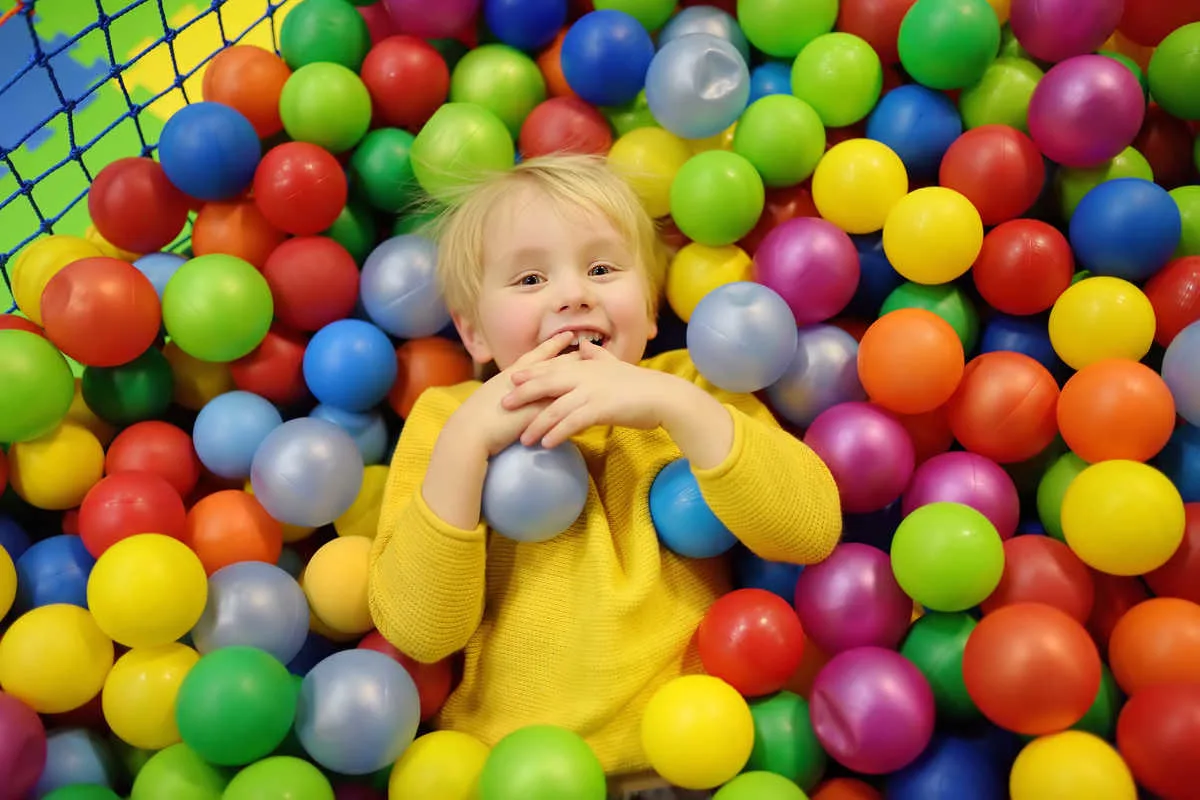
I have a ton of happy memories–loud memories–of playing in the ball pit every time we went to a birthday party. It’s one of those activities that are a whole lot of fun.
You can make a ball pit at home for your toddler, if you’re worried about him getting lost in the bigger ones. All you need is one of those inflatable kiddie pools and plenty of colored balls to fill them up with.
35. Markers in a Cardboard Box
Cardboard boxes are a great choice for imaginative play that also include a tangible object. It encourages your child’s creativity to flow. How?
Well, you hand him a marker and some colored pens and leave it to him to decorate the box however he likes. Then just sit back and enjoy him having fun!
36. Painting with Water

Painting with water is a sensory activity, as well as pure fun. It’s also an activity that can help your child feel comfortable enough to make mistakes and learn from those mistakes because water can erase it all away, right?
This can be a precursor to teaching them how to write, as well.
37. Bubble Wrap Sensory Paint
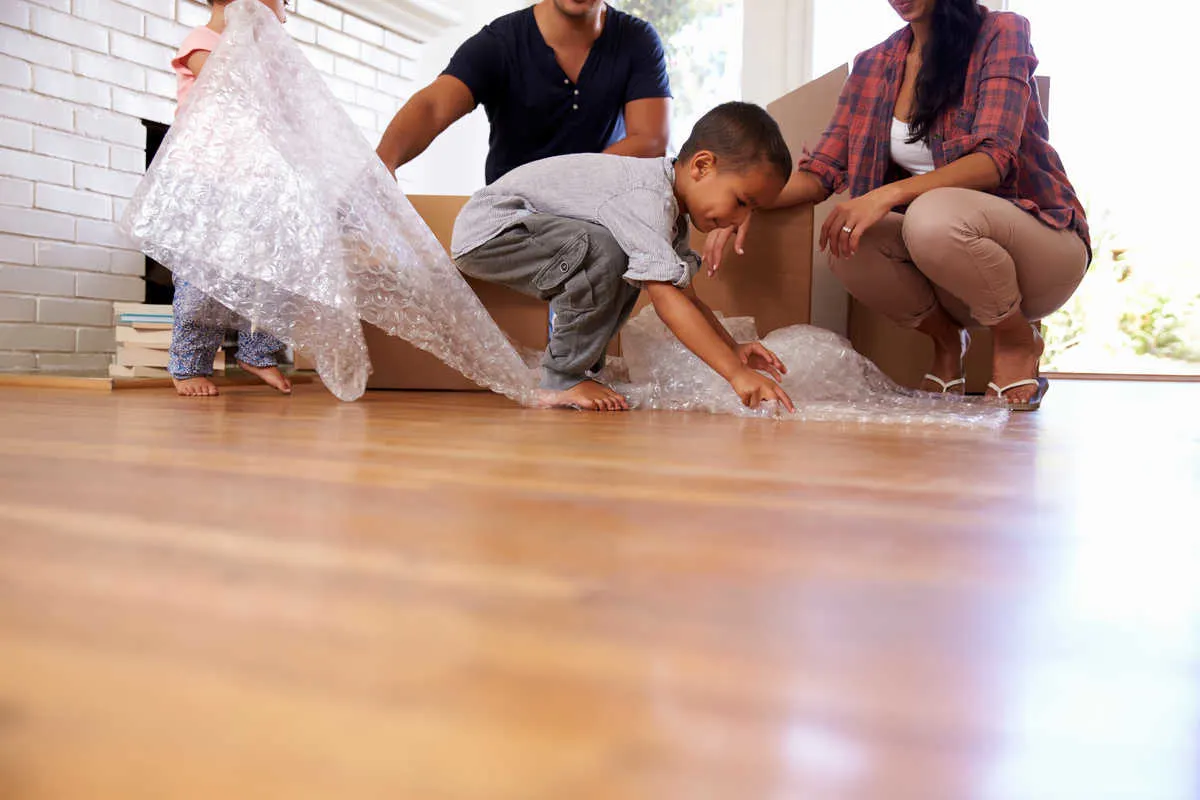
Find me a person who doesn’t like bubble wrap and I’ll eat my hat with mustard and relish. I just adore the pop-pop-pop of the sheet, and I bet your kid will too.
Why don’t you go one step further and turn it into a painting session slash developmental activity? A few blobs of paint over the bubble wrap just might unleash all that pent up messy creativity.
38. Coloured Beans Sensory Play
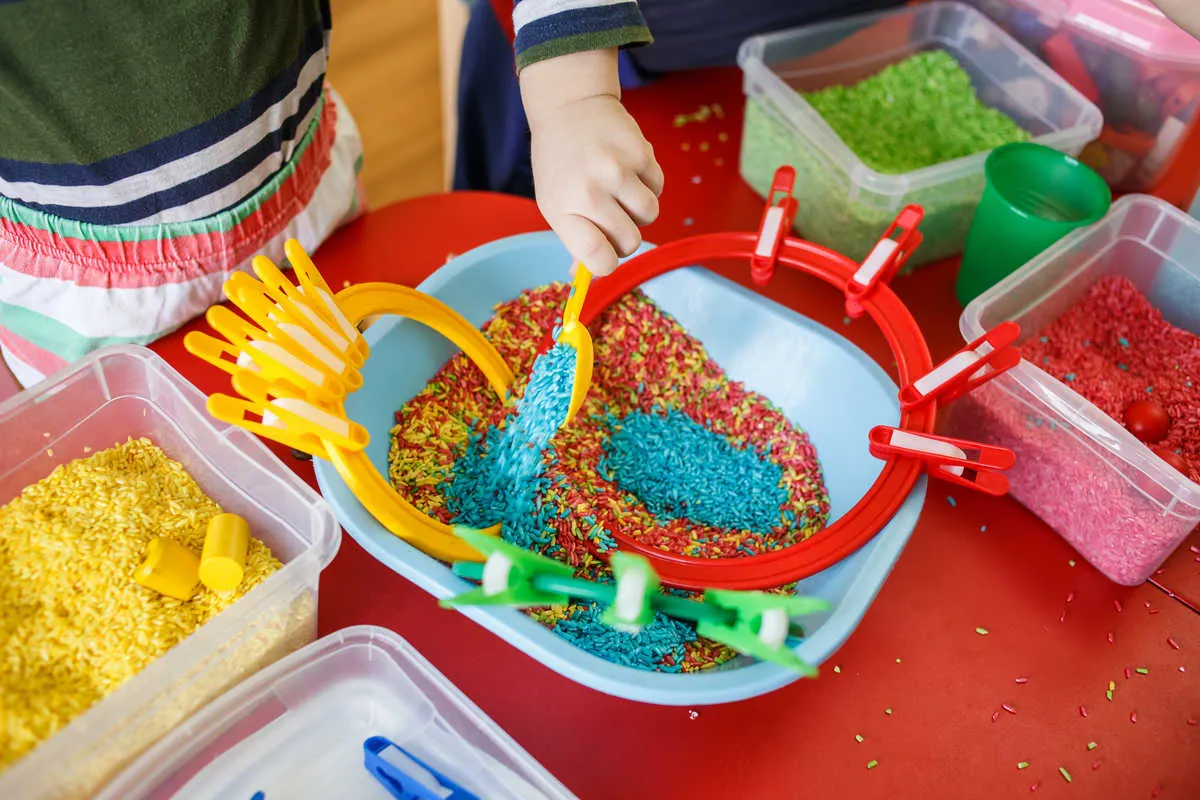
Beans, lentils, and pulses are pretty popular choices to include in sensory play time. They are textured, colored, and they make lovely sounds when you shake the box. If you want to add some more color to the beans, then what’s stopping you?
Go ahead and color those beans up!
39. Pom Pom Sensory Bin
Certain things, like pom-poms for instance, are just out there. They’re a treat to the senses, they’re loud, colorful, and just plumb fantastic.
A pom pom sensory bin might be a great opportunity for your child to play with different colors and textures. You can also add a wet and dry element, like putting pom-poms in water, and then allow your kids to enjoy it!
40. Backyard Toy Painting
It’s so easy to get caught up with the world inside where everything is accessible on your screens, that you quite forget to take your little one outside for a little sun n’ fun. How about an hour or two of backyard toy painting to help him breathe in the fresh air?
Besides, it sure is easy to manage the paint splatter outside, isn’t it?
41. Edible Painting Bread
Does your child love to play around with his food? Then why not let him do that a time or two? With edible painting on bread, feeding time and playtime can be one big activity filled with fun and color.
It also means you don’t have to worry about your kid accidentally eating paint!
41 Fun 2-Year-Old Baby Activities
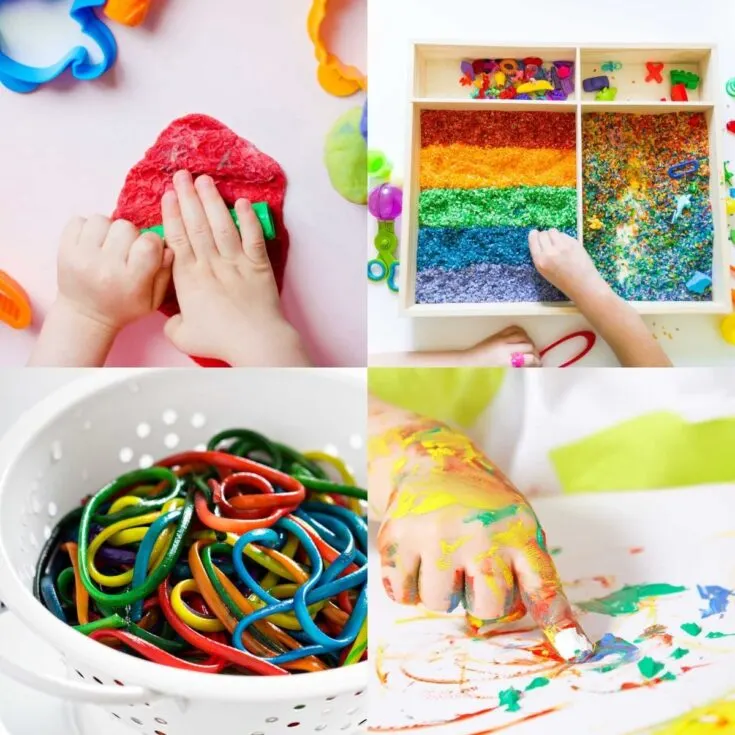
Needing some Activities for 2-Year-Olds? These fun activities for children will engage the little ones and have fun!
Materials
- Find the perfect activity for your 2-year-old.
Instructions
- Choose the activity your babies will love!
- Have fun!
